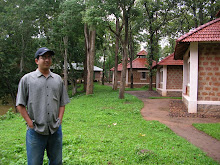· The global wound care market is estimated to be worth US$7.2 billion in 2006 and comprises two sectors, traditional and advanced.
Traditional wound care products consist mainly of low technology gauze-based dressings such as woven and non-woven sponges, conforming bandages and non-adherent bandages. While effective in certain wound management environments, industry and commercial interest is focused on the wide range of new, advanced wound care products and treatments that are coming to market.
The advanced wound care segment encompasses a wide range of disparate technologies that fall into three main categories:
· Moist wound dressings (hydrogels, hydrocolloids, alginates, foams and transparent films);
· Antimicrobial dressings which deliver substances such as silver to the wound;
· Biological products such as skin substitutes, tissue-engineered products and growth factors.
In addition, a growing number of wound-healing devices such as negative pressure wound therapy (NPWT) are becoming more prominent. The sector also includes a variety of other treatments such as oxygen therapy, electrical stimulation; low level laser therapy (LLLT), therapeutic ultrasound and maggot therapy.
The US$4.1 billion global advanced wound care segment is the fastest growing area with double-digit growth of 10% per year. This growth is being driven by an ageing population, the rise in the incidence of diabetes worldwide and a steady advancement in technology and products that are more clinically efficient and cost effective than their conventional counterparts.
Few areas of medical research are developing such a wide variety of novel clinical approaches, from the most up-to-date tissue regeneration technology to natural cures.
A common issue facing all developers, and one which is limiting growth, is the disparity in reimbursement levels. Often valuing the product at cost and ignoring the cost- efficiency benefits of faster recovery times, health payers are playing a role in determining market expansion. This is more apparent in the US market which, unusually, is the second market of interest after Europe.
An increasing medical need
Elderly people, diabetics, immunosuppressed and immobilised individuals have an increased incidence of chronic wounds and other dermal afflictions that result from poor circulation and immobility, e.g. pressure ulcers (bed sores), venous stasis ulcers, and diabetic ulcers. These chronic conditions greatly increase the cost of care and reduce the patient’s quality of life. As these groups are growing in number, the need for advanced wound care products will increase.
Friday, 30 March 2007
Global Wound Care Market - $7.2 billion
Subscribe to:
Post Comments (Atom)

No comments:
Post a Comment